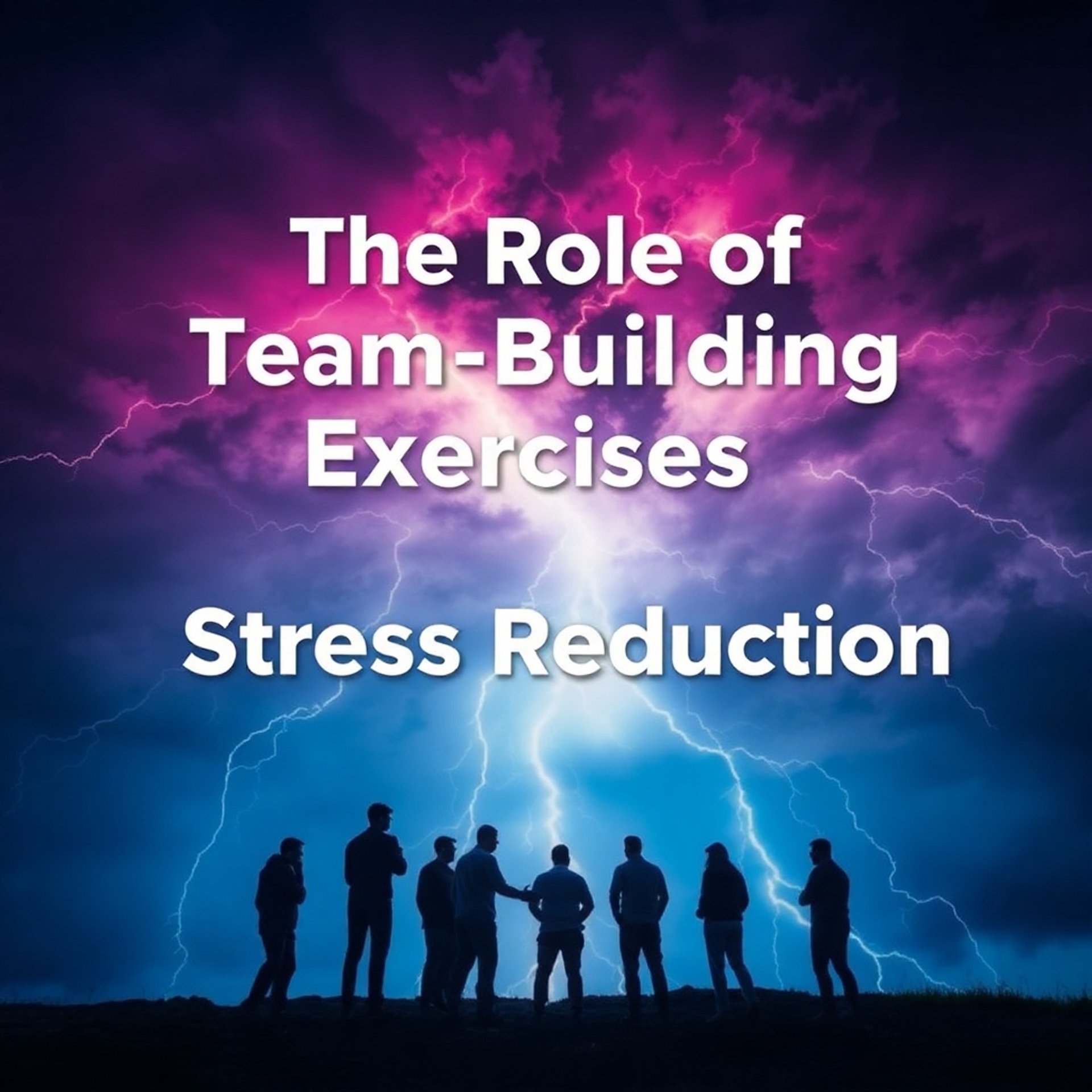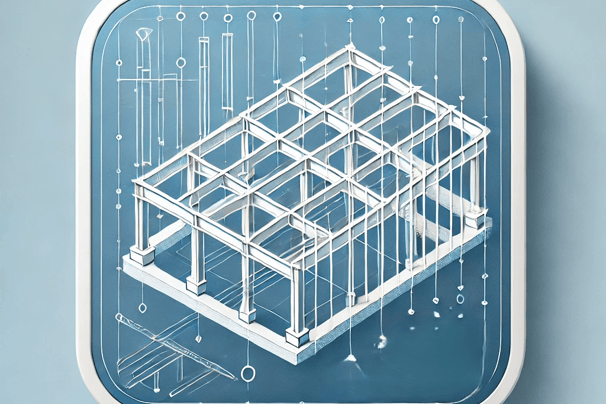
The Role of Team-Building Exercises in Stress Reduction
Workplace stress is a significant challenge, but the role of team-building exercises in stress reduction offers a powerful solution. Discover how these activities foster collaboration, trust, and communication, transforming team dynamics and promoting a healthier, more supportive work environment.
12/10/20246 min read
Workplace stress is a daily challenge for many employees, impacting mental health, productivity, and overall organizational success. The good news is that the role of team-building exercises in stress reduction has proven to be an effective solution. These activities promote collaboration, trust, and communication, alleviating stress while boosting morale.
By incorporating practical strategies to combat job-related stress and the role of leadership and best practices for managers, organizations can proactively create healthier work environments. Building a culture of support through creating a healthy work culture as well as policies and practices to reduce stress is essential, and team-building plays a key role in workplace stress and its effect on team dynamics.
Emphasizing emotional intelligence, as discussed in our article on leveraging emotional intelligence to manage workplace stress: a guide for employees, and offering flexible work arrangements helps employees manage stress more effectively. Additionally, the role of physical workspace design in reducing stress and addressing the impact of job insecurity on mental health are important for creating a supportive environment.
Finally, incorporating ways to manage micromanagement stress at work can relieve unnecessary pressure. By combining team-building exercises with these strategies, organizations can foster a healthier, less stressful workplace.
How The Role of Team-Building Exercises in Stress Reduction Addresses Workplace Stress
The role of team-building exercises in stress reduction is to address these challenges head-on, creating an environment where we can thrive. We all know what it feels like to be stressed at work—whether it’s the relentless deadlines, the weight of responsibilities, or interpersonal conflicts. By connecting us with our colleagues in structured and meaningful ways, team-building activities break down barriers, improve relationships, and nurture a culture of mutual support and understanding. Let’s explore the specific ways they tackle stress.


Enhancing Emotional Well-Being
Workplace stress often stems from feeling disconnected or isolated. Team-building bridges this gap by fostering emotional connections.
When we participate in activities that encourage us to share our stories, collaborate on challenges, or simply have fun together, we build relationships that make the workplace feel less overwhelming and more like a supportive community.
Improving Communication and Reducing Conflict
Miscommunication and unresolved conflicts are breeding grounds for stress. Team-building exercises create opportunities for us to practice open, honest communication in a safe, low-pressure setting.
These activities help us see each other’s perspectives and encourage us to express ourselves more effectively, which reduces misunderstandings and leads to a more harmonious workplace.


Building Trust and Mutual Support
Stress often feels heavier when we think we’re carrying it alone. Trust is the antidote to this, and team-building exercises are a fantastic way to cultivate it.
Activities that require us to rely on one another—whether it’s navigating a ropes course or solving a group puzzle—build trust and reinforce the idea that we can depend on each other when challenges arise.
Promoting a Sense of Belonging
One of the most stressful feelings is the sense of not being valued or included. Team-building exercises counteract this by making us feel like integral parts of the team.
When we participate in activities that celebrate our contributions and recognize our strengths, we’re reminded of our value and role within the group, reducing anxiety and boosting confidence.
Together, these benefits create a workplace dynamic where stress takes a backseat, and collaboration and positivity thrive.




Exploring the Key Mechanisms of Stress Reduction
Stress is an inevitable part of work life, but understanding the key mechanisms through which stress reduction can be achieved is essential for creating a healthier, more supportive workplace.
Team-building exercises are particularly effective because they target multiple psychological and social factors that contribute to stress.
By focusing on emotional well-being, communication, trust-building, and fostering a sense of belonging, these activities offer powerful solutions for reducing workplace stress.
Here’s a deeper dive into some of the key mechanisms that make team-building exercises so effective in stress reduction.
The Psychological Impact of Team-Building
Stress is as much about perception and emotion as it is about external pressures. Team-building exercises tap into this reality in powerful ways:
Fostering Positivity: Let’s face it—when we’re laughing or engaged in something enjoyable, stress feels miles away. Activities like scavenger hunts or creative workshops inject joy into our day, lifting our spirits and reducing anxiety.
Encouraging Vulnerability: It can be intimidating to admit we’re struggling, but team-building creates spaces where we feel safe doing so. These shared moments of vulnerability foster empathy and camaraderie.
Reinforcing Self-Worth: By highlighting our strengths and celebrating group achievements, team-building boosts our self-confidence, making us feel more capable of handling stressors.


Strengthening Communication and Collaboration
Good communication is like oil in the machinery of the workplace—it keeps everything running smoothly. Team-building enhances this by:
Encouraging Active Listening: Activities that require us to focus on others’ input help us become better listeners, reducing misunderstandings.
Resolving Tensions: Addressing conflicts in a structured, low-pressure environment helps us move past lingering issues.
Fostering Understanding: Getting to know each other’s working styles and strengths leads to more cohesive teamwork.
When communication improves, so does collaboration—and stress diminishes as a result.
Long-Term Cultural Benefits
The impact of team-building doesn’t stop at the end of the activity. Over time, it transforms the very fabric of workplace culture:
Cohesive Work Environment: Regular team-building strengthens bonds and creates a workplace where mutual respect and camaraderie are the norms.
Reduced Burnout: Employees who feel supported by their teams are less likely to experience the exhaustion and disengagement that come with burnout.
Higher Retention Rates: A positive team culture makes employees want to stick around, reducing turnover and creating stability.
Diverse Angles to Explore Team-Building and Stress Reduction
Team-building and stress reduction are two critical elements that foster a productive and positive work environment.
Exploring these concepts from various angles can offer fresh insights into improving both individual well-being and overall team dynamics. Here are diverse angles to explore


Team-Building for Remote Workforces
Remote work has many benefits, but it can also lead to feelings of isolation and disconnection.
Virtual team-building—such as online trivia nights, collaborative digital projects, or virtual coffee chats—brings us together despite physical distances.
These activities are simple yet impactful ways to build relationships and reduce stress in remote teams.
Industry-Specific Applications
Every industry faces unique stressors, and team-building can be tailored to meet those needs:
Healthcare: Stress is an everyday reality in healthcare, but simulation exercises and debriefing sessions help teams prepare for high-pressure situations and build trust.
Education: Teachers face the dual pressures of classroom management and student success. Team-building during professional development days fosters a sense of shared purpose and support.
Corporate Settings: From problem-solving challenges to creative retreats, corporate team-building helps employees step back from daily pressures and reconnect with their mission.


Tailoring Team-Building to Organizational Goals
Effective team-building isn’t one-size-fits-all. Tailoring activities to align with our team’s objectives maximizes their impact.
Productivity-focused teams benefit from strategic challenges, while creative teams thrive in activities that inspire innovation. In high-stress industries, trust-building exercises are particularly valuable.
Best Practices for Implementing Team-Building Exercises
To make team-building a consistent source of stress relief and engagement, consider these best practices:
Regular Scheduling: Incorporate team-building into our calendar as an ongoing commitment, not just a one-off event.
Employee Input: Involve everyone in planning. Activities should reflect our team’s interests and needs.
Inclusivity: Design activities that make everyone feel welcome, regardless of their personality or abilities.
Measure Success: Use feedback to assess what works and continuously improve.
These practices ensure team-building becomes a meaningful and effective part of our workplace culture.
Conclusion
When we step back and consider it, the role of team-building exercises in stress reduction goes far beyond momentary relief. These exercises lay the foundation for a workplace culture that values connection, collaboration, and mutual support. They remind us that stress doesn’t have to define our work lives—we can actively shape environments where well-being thrives.
By embracing team-building, we’re investing in each other. We’re creating a space where we all feel seen, valued, and supported—a place where challenges feel manageable and successes feel shared. Whether we’re solving a puzzle together, sharing a laugh during a virtual game, or working through a group challenge, team-building helps us navigate the ups and downs of work life with greater resilience.
Stress may be a part of modern work, but with team-building, it doesn’t have to overwhelm us. Instead, we can rise above it—together.
This article is the result of our own experiences in working with and forming teams, as well as scientific research. The following sources provide valuable insights into the importance of team-building and stress reduction:
Forsyth, D. R. (2021). Recent advances in the study of group cohesion. Group Dynamics: Theory, Research, and Practice, 25(3), 213–228.
McEwan, D., Ruissen, G. R., Eys, M. A., Zumbo, B. D., & Beauchamp, M. R. (2017). The effectiveness of teamwork training on teamwork behaviors and team performance: A systematic review and meta-analysis of controlled interventions. PLOS ONE, 12(1), e0169604.
Jones, J. (2013). We Are All In This Together: Stress Reduction and Team Building Activities for Modern Library Organizations. Codex: The Journal of the Louisiana Chapter of the ACRL.
Ozigbo, A.-M., Maryam, I., & Ngige, C. D. (2020). Team building and performance in organizations: An exploration of issues. International Journal of Management and Entrepreneurship (IJME), 2(1), 184.
Buljac-Samardzic, M., Doekhie, K. D., & van Wijngaarden, J. D. H. (2020). Interventions to improve team effectiveness within health care: A systematic review of the past decade. Human Resources for Health, 18(2).




